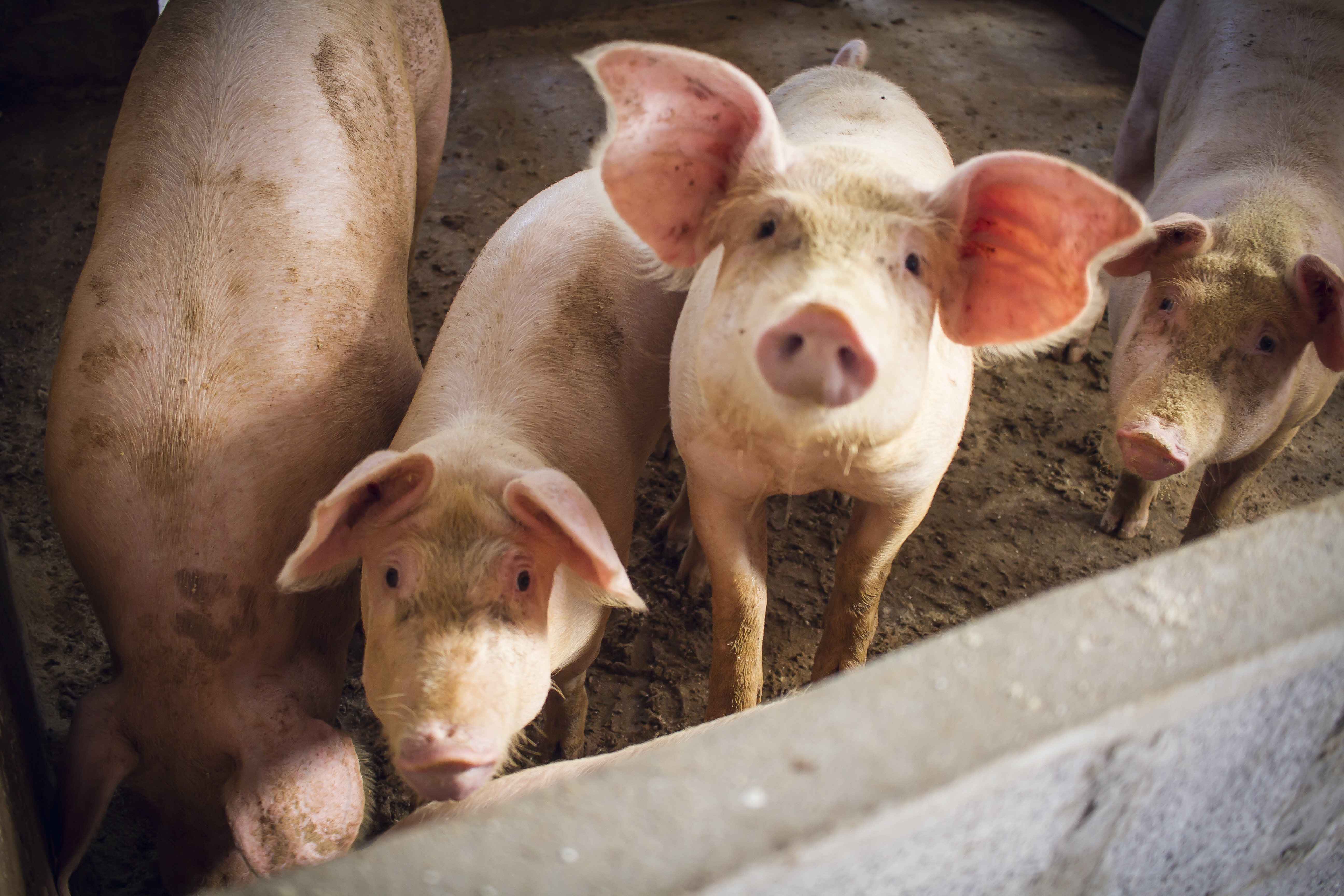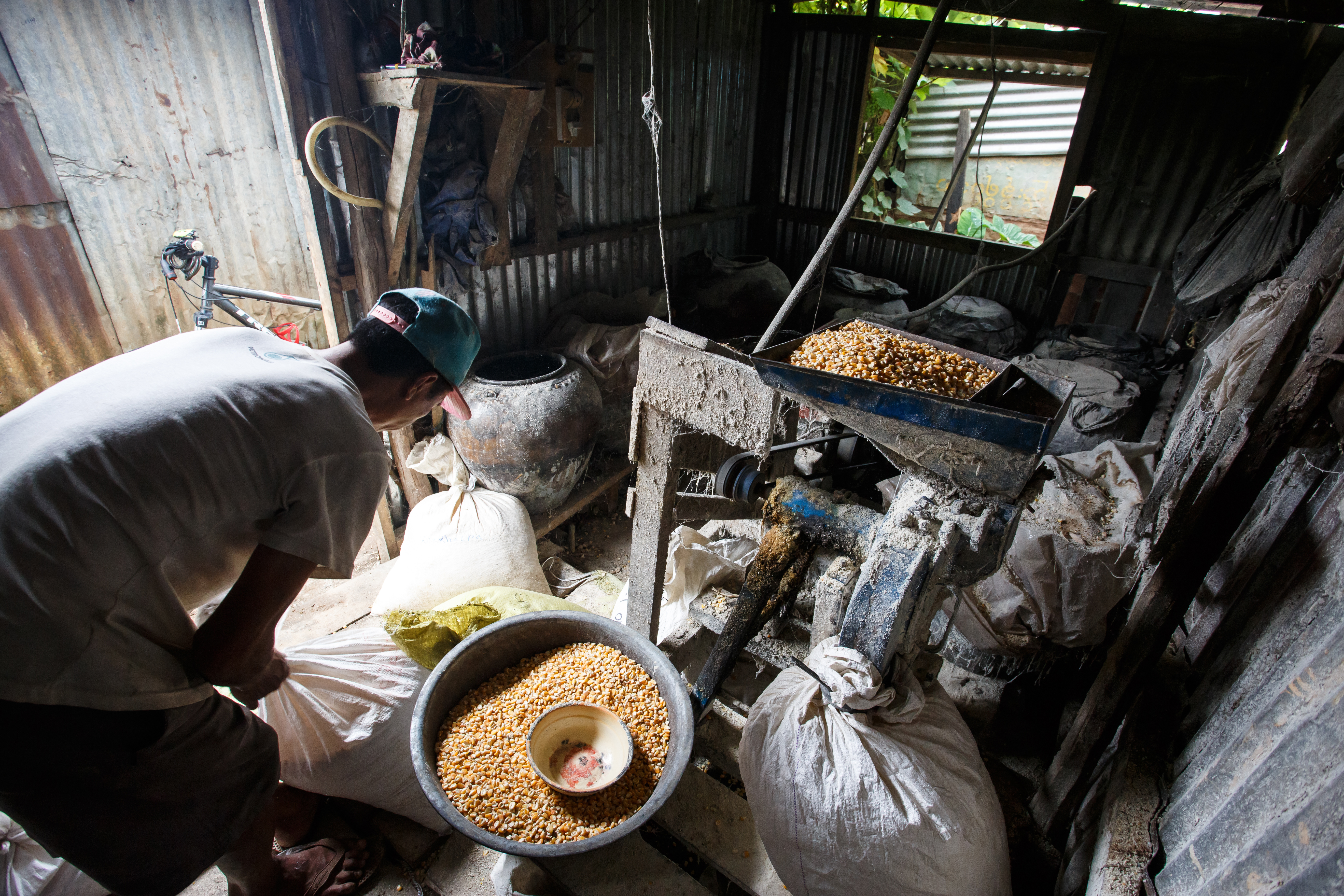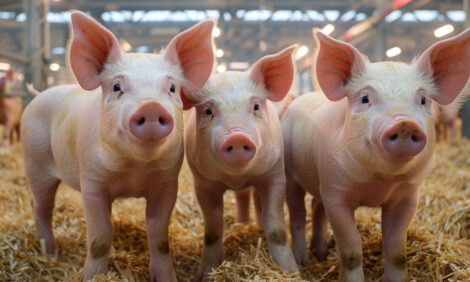



Why are pigs in Africa struggling to meet the growth rates achieved in Europe?
Why do pigs in Africa sometimes struggle to reach 100kg in five months? And does this matter to the profitability of your farm?Historically, slaughter weights achieved by sub-Saharan African wild pigs reared in Africa tend to be lower than the weights achieved by European breeds raised in Europe. What is perhaps surprising is that those same high-performing European breeds also do not perform as well in Africa as they do in Europe. Over the course of two articles, we explore why this performance gap is observed between pig herds in Africa and Europe and whether this has a critical impact on the profitability of pig farms in Africa.
To answer the first part of this question, we need to understand the innate behaviour and characteristics of domestic pig breeds and their wild pig ancestors. According to Lund and Weary, “natural behaviour is the collection of different behaviours that pig have acquired and used to survive the evolutionary process. These innate behaviours are essential aspects of natural and survival behaviour”.
To raise pigs successfully and profitably, we must tailor husbandry protocol to suit the innate needs of the pig and ensure the environment is optimised for their productivity.
Living environment
Temperature
Research has also shown that environment temperature is a significant factor affecting both voluntary feed intake level and overall nutrient requirements for pigs.
The preferred temperature range for pigs is called the thermoneutral zone. This is the range of temperature in which the pig is comfortable and does not require additional or reduced energy intake to maintain body temperature.
As a general rule, for every 2 °F decrease below or above the thermoneutral zone, energy intake in growing pigs will be increased or decreased, respectively, by about 40 kcal/da. In cold conditions like in Europe, the pig increases food consumption and energy metabolism to generate body heat and maintain internal body temperature. In contrast, when environmental temperatures are above the thermoneutral zone, like in Africa, pigs consume less feed to reduce the extra heat produced by digestion of feed and metabolism of nutrients.
In parts of Africa where the temperature is consistently above the thermoneutral zone, pigs automatically decreases the amount of feed they consume so as to reduce the extra heat generation thus resulting in poorer feed conversion and slower growth rate.

More fat and less lean meat
During the first four months in the life of a pig (under 45kg weight), the muscle tissue and the bones of the skeleton develop faster than the fat tissues. However, at four months old, this process is reversed, and muscle, which forms the lean meat, develops slower, and the pig body forms more fat.
For pigs raised in hotter climates, they may reach the 45kg weight at the same time as those raised in more temperate countries. However, as they reach 45kg and switch to producing more body fat, they begin to experience more heat stress and as a result, they automatically begin to consume more water and less feed.
The impact of warm weather on pig physiology was further confirmed in recent studies which show that even in temperate countries, breeding and carcase weights of pigs are lower in the summer months than during winter months.
Stocking density
It is easy for stocking density to get out of control as your pigs increase in size, but this problem is further exacerbated by the higher ambient temperature in Africa. Research has shown that in intensive systems, stocking densities should be lowered by 10 percent if the temperature is above 25 degrees Celsius.
Stress
Research has shown that environmental stress plays a significant part in the growth rate of pigs. Naturally, acute stress is a natural part of a pigs’ life and this starts from within the context of their social dynamics, especially during feeding and drinking and mating - within a few hours after birth, social dominance hierarchies are established among piglets.
This said, pigs in Africa are faced with the additional stress that comes from the presence of predators that are common in African ecosystems.
Pigs are prey to lions, cheetahs and leopards and when pigs sense a predator which presents a sudden threat, information about the stressor is processed and a ‘flight or fight’ response is triggered. The immediate effect of this hormonal activity is to increase the availability of energy in the pig’s leg muscles, increase heart rate and respiratory rate, while putting on hold digestion, growth and reproductive capacity of the pig so as to enable the pig to either fight or flee the threat.
The long-term impact of this predatory stress, leads to pigs that are naturally smaller in size that are very alert and able to move away from aggressors speedily. These pigs are a far cry from their European counterparts.
Genetics
Most of the exotic breeds, imported to sub-Saharan Africa have been genetically engineered by scientists in their country of origin to reach certain weights within a particular time frame under some stipulated environmental conditions and parameters, which is sometimes difficult or too expensive to adhere to on the typical pig farm environment in sub-Saharan Africa. This includes the conducive weather, farm environment, housing, pathogen exposures, and staffing, all of which impact the performance and the growth rate of the pig.
As a pig farmer and trainer, people always ask me what breed of pig is the best for their system? My answer is that it depends on the goal of your farm and this is not always the answer that people expect from me. I always stress the importance of ‘profitability’ during my training because just increasing the litter size of pigs (or any other physical performance of the pigs) is not enough. You need to consider how profitable the whole effort is and will be.
I have met many African farmers who started their farm with high-performing exotic pig breeds in Africa without taking the time to understand the fundamentals of pig farming. The price of these imported pigs and the cost of feeding them (concentrate) was so expensive that with the current pig market situation and the price of feed, especially in Nigeria, it was extremely difficult for such pig farmer to break even despite all the praiseworthy effort and courageous capitalisation that they have invested on their farms.
I have also seen farms rearing hybrid pigs (a cross between an exotic breed and a popular local breed) which cost less than the pure exotic breeds and also require less capital to feed (because they can partly utilise locally available feed ingredients). Though these hybrids have performed below the high-performing exotic breeds in physical performance, they are more profitable when considering the return on investment and currrent market price of pigs.
Furthermore, while genetics play an important role in achieving success in pig farming, they only account for 30 percent of the factors determining pig growth rate. Farmers should focus on providing good husbandry and maintaining a high health status in their herd.
Birth and weaning weight
Research has shown that poor feeding during pregnancy, poor weaning weight/size due to poor creep feed, the age of weaning, quality of staff all impact pig’s growth rate. For example, a difference of 0.5 kg birthweight is equivalent to a weaning weight of 1 kg and 10kg at finisher weight. Birth weight is important because it is an area that is within the farmer’s control. Birthweight is not determined by genetics but rather by how well your staff manage and treat the gilt or sow at the very early stage of the reproductive cycle.
Feed
Ingredients and quality
Many African pig farms can only afford to provide pigs with industrial waste or by-products such as palm kernel cake, corn bran, wheat bran and some maize and soya meal. This is not because African farmers are cruel and mean to their pigs but rather because they cannot harvest enough grain to feed both the human population and the pig population.
Research has shown that many of these common feedstuffs used in Africa contain natural toxins or indigestible nutrient forms that actually impair pig performance and reduce voluntary feed intake, thus negatively affecting feed:conversion ratios. These toxins include phytate, trypsin inhibitors, saponins, tannins, and glucosinolates. Trypsin inhibitors are present in soybeans that have not been properly heat processed, and are also present in alfalfa, rye and barley.
Other factors affecting feed and ingredient quality in Africa include the lack of appropriate feed ingredients which is aggravated by persistent incidences of drought or floods. The production and the quality of feedstuffs is often low and seasonal. This situation is further exacerbated by poor harvesting, processing and storage of the feed ingredients, lack of laboratory facilities for chemical analysis of ingredients, lack of trained feed technologists, frequent interruptions in power supply to grind and compound feed ingredients, and lack of spare parts for maintenance of equipment for harvesting and processing, which are generally imported from other countries.

Mycotoxins
Mycotoxins are leftover toxic chemical products produced by organisms of fungal origin. Fungi include moulds, mildews, rusts, yeasts and mushrooms. As an organism, they lack chlorophyll, leaves, true stems and roots. They reproduce by growing spores on dead organic matter or parasites.
Mould is the coating or discolouration caused by various fungi that develop in a damp atmosphere on the surface of stored food - this is prevalent where humidity is very high during the rainy season especially in forested areas. The mould fungus may be harmless or even dead but it can still leave mycotoxin (poisonous) residues behind, commonly in stored and mixed feed, and especially in mouldy grain.
Even when the grain is eventually processed, while it may destroy the moulds, it still leaves mycotoxin residues behind. Mycotoxins only need to be present in very small quantities in the feed to cause problems in pigs, such as infertility, anoestrus, prolapse, false pregnancies and embryo mortality. Poor growth and vomiting are also common clinical signs of mycotoxin poisoning. Mycotoxins can also pass through sow’s milk and remain behind in any slaughtered carcase.
Mycotoxins are an important issue and many pig farms are suffering problems in the herd that emanate from using mycotoxin infected grains and feed ingredients. There is also a lack of awareness in farming communities that mycotoxins are a major cause of productivity decline and sickness in the herd.
While the mycotoxin problem is present on every continent, it is more pronounced in African farms because of the following reasons:
1. the high heat and humidity in Africa provides a perfect environment for fungal growth.
2. Maize and groundnut are a cheaper alternative to soya meal and fishmeal but also provide optimal conditions for fungi.
3. There is also increased use of by-products such as brewery waste, rice and corn and wheat bran as an alternative feed ingredient to reduce feed costs. This factory waste often have a high degree of mycotoxin contamination.
4. Increased mixture of crops grown under different climatic conditions eg, savannah in the north and humid southwest which, when mixed together, can result in a wide spectrum of mycotoxin presence, made more acute in their effects on the pig, poor harvesting method and substandard storage facilities which crack the protective grain pericarp before any drying process takes place and allows surface moulds to gain entry. Poor storage of moist grain (grain with more than 13 percent moisture) – this is common in West Africa, especially where grains are harvested during the rainy season and are not allowed to dry properly and finally, keeping feed that is in a bag on a bare floor or on the wall instead of silo is very common in Africa and this can increase moulding of feed. Such feed should have been stored on the farm on a rack and away from the wall.
Frequency of feeding
For the high-performing exotic pigs to achieve 100kg in 5 months, they need to be fed ad libitum. Ad lib is the feeding management through which pigs are offered as much food as they want. That is, they always have feed in their feeding trough at their disposal 24/7 thus allowing pigs to grow faster as there is less competition for feed.
However, in most African farms, pigs are ration fed with very limited amounts of feed, normally lower than the amount that they can eat (the feed is not available 24 hours a day). While this lowers the cost of food for farmers, it also slows growth rate.









